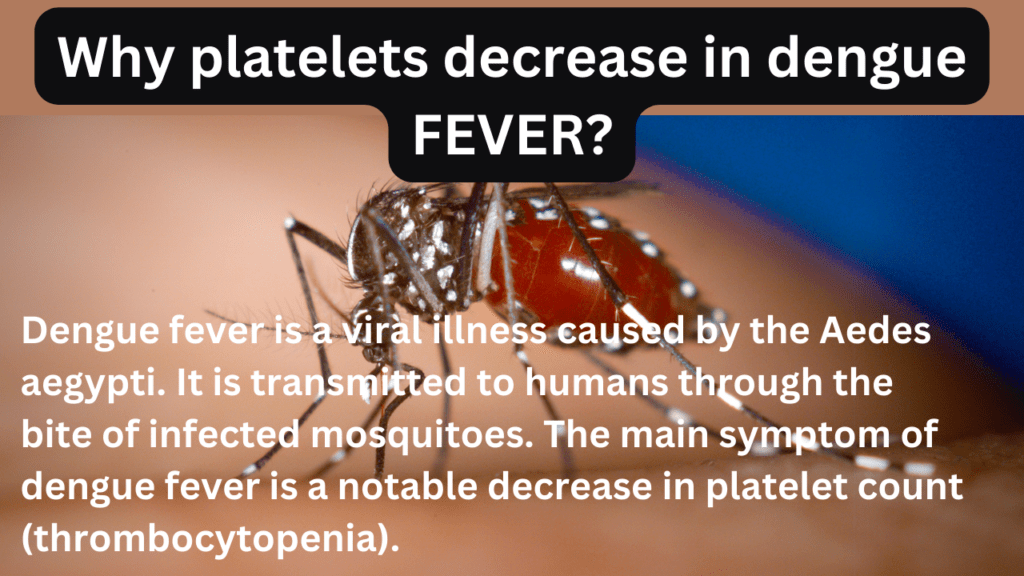Here we will learn about intricate mechanisms that lead to a decline in platelet levels during dengue infection.

Dengue fever is a viral illness caused by the Aedes aegypti. It is transmitted to humans through the bite of infected mosquitoes. The main symptom of dengue fever is a notable decrease in platelet count (thrombocytopenia).
1. Viral Invasion and Immune Response
Upon being bitten by an infected Aedes mosquito, the dengue virus enters the bloodstream, initiating a complex interaction with the body’s immune system.
The virus primarily targets white blood cells, disrupting their normal function. The body responds by mounting an immune defense, which can inadvertently impact platelet production and survival.
2. Bone Marrow Suppression
Dengue infection causes bone marrow suppression, a phenomenon where the bone marrow, responsible for producing blood cells, is adversely affected. The virus affects hematopoietic stem cells, which give rise to platelets and can lead to a reduction in their production. This suppression contributes significantly to the drop in platelet count observed in dengue patients.
3. Increased Destruction and Clearance
Dengue triggers the release of immune factors and antibodies in response to the viral invasion. While these factors aim to eliminate the virus, they can also inadvertently target and destroy platelets. Moreover, the spleen, a crucial organ involved in the immune response, can trap and clear platelets from circulation, further contributing to thrombocytopenia.
4. Platelet Aggregation and Sequestration
As part of the immune response, platelets tend to aggregate, forming clumps. These clumps can lead to the blockage of platelets in small blood vessels. It results in hindering blood circulation and reducing the overall platelet count.
This phenomenon, known as disseminated intravascular coagulation (DIC), is a common complication in severe dengue cases.
5. Vascular Leakage
Vascular leakage is a hallmark feature of severe dengue infection, where blood plasma leaks from blood vessels into surrounding tissues. This leakage can result in hemoconcentration. In this condition the concentration of cells in the blood increases, leading to a false drop in platelet count when measured in routine laboratory tests.